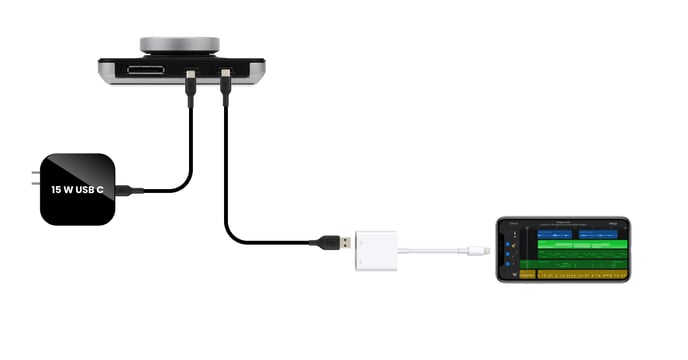How to connect Duet 3 to iPhone (or iPad with Lightning port)
The Duet 3 can connect to iOS devices such as iPhone and iPad.
For iPads with the USB-C port (such as iPad Pro), simply connect the included USB-C to USB-C cable between Duet 3 and the iPad as shown in this article:
Is Duet 3 compatible with iPad OS and iOS devices?
For iPhones and iPads with the Lightning port, you will need to supply external power because an iPhone does not provide enough to power Duet 3.
The easiest way to do this is to use an external USB-C power supply, and connect to the 2nd USB-C port on the Duet 3:
- Duet 3 must be on firmware 1.0.18 or higher
- First, connect a 15-watt or higher USB-C power supply to either Duet 3 port - the light on Duet 3 should illuminate
- Then connect a USB-C cable from the other Duet 3 USB-C port to Apple's USB to Lightning camera adapter to your iPhone

Now you can open a recording app on your iPhone (like Garageband) and start recording using the Duet 3!
Here are links to Apple's adapters for reference: